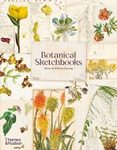![The Fossil History of the Juglandaceae The Fossil History of the Juglandaceae]()
Click to have a closer look
About this book
Customer reviews
Related titles
About this book
A critical review of the fossil record of pollen, inflorescences, fruits, and foliage provides a basis for interpreting the evolutionary and biogeographic history of the walnut family (Juglandaceae). Intergrading features of pollen and floral morphology suggest that the Juglandaceae evolved from plants of the Normapolles complex with bisexual flowers and tiny bicarpellate nutlets during the latest Cretaceous or early Paleocene. The paleogeographic distribution of Normapolles pollen and of early juglandaceous taxa indicates that the family originated in the Northern Hemisphere. Although the present-day center of diversity for the family is eastern Asia, the fossil record does not support previous arguments for an Asian origin. All of the six genera present today in Asia have Tertiary records in Europe and North America. The earliest center of generic diversity appears to have been North America or Europe. The major diversification of the family is recorded in the pollen and megafossil record of the early Tertiary. Fruits from the Paleocene include representatives of the tribe Juglandeae as well as genera that cannot be assigned with certainty to modern tribes. During the Eocene, all four extant tribes were present, and the family achieved its greatest generic diversity including both extinct and extant genera. As today, most of the early Tertiary genera had winged fruits; however, large, Wingless fruits apparently adapted for animal dispersal were also present. Although the Engelhardieae retains more primitive characters than other modern tribes, its evolution, as defined by the appearance of the trilobate inflorescence bract, was apparently subsequent to that of other tribes. Nearly all modem genera had broader distributions in the Tertiary than today. Some of the Paleocene and Eocene genera (such as Polyptera, Paleoplatycarya, Paleooreomunnea, and Paraengelhardtia) were never very widespread and became extinct, presumably in response to climatic fluctuation, by the end of the Eocene. During the same interval, Cyclocarya and Platycarya became extinct in North America but survived in Eurasia. In the early Tertiary, the major route of intercontinental migration appears to have been across the North Atlantic between North America and western Europe. During the Neogene, exchange of taxa occurred between North America and Asia and between Europe and Asia, resulting in broad Miocene distributions of Pterocarya, Juglans (sect. Cardiocaryon), Carya, and Cyclocarya. Extreme range reductions occurred during the Pliocene and Pleistocene, resulting in the elimination of Prerocarya, Juglans sect. Cardiocaryon, and Carya from western North America and western Europe, and the restriction of Platycarya, Cyclocarya, and Engelhardia to eastern Asia.
Customer Reviews















![Catálogo de la Flora Relictual del Valle Geográfico del Río Cauca [Catalog of the Relictual Flora of the Geographical Valley of the Cauca River]](http://mediacdn.nhbs.com/jackets/jackets_resizer_medium/24/245138.jpg?height=150&width=100)

![Catálogo de la Familia Poaceae en la República Argentaina [Catalogue of the Poaceae Family in the Argentine Republic]](http://mediacdn.nhbs.com/jackets/jackets_resizer_medium/37/37816.jpg?height=150&width=105)




















![Flora Mesoamericana, Volume 7 (Part 2): Orchidaceae [Spanish]](http://mediacdn.nhbs.com/jackets/jackets_resizer_medium/36/36837.jpg?height=150&width=113)








